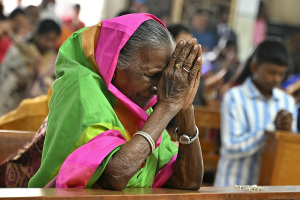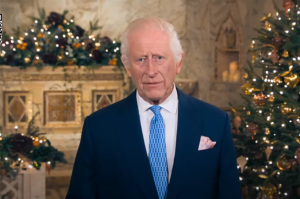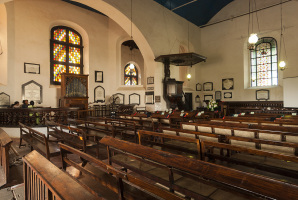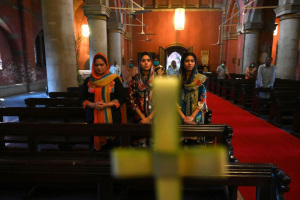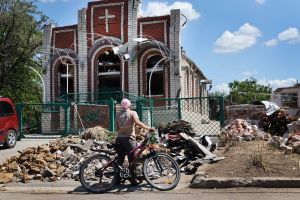Here's How to Really Help India, Mr. Biden
Let's not mince words: There's a reason the U.S. secretary of state visited India last month and the first American vice presidential visit in three decades is taking place right now. India is the world's largest democracy with the third-largest economy and one of the most powerful militaries. India is an important friend to have, and a robust, stable India is in the free world's best interest.
But there's the problem: How to achieve a robust and stable nation that is home to a third of the world's poor, the largest number of illiterate adults on the planet and the epicenter of human trafficking.
There lies the difference between New India, the so-called "India Shining," and Old India, a land of poverty and exploitation. New India has accessed all the fruits of globalization, economically and culturally. But there's a double standard because the upper caste has access to English education not available to the disenfranchised majority.
As much as I appreciate high-level U.S. interest in my homeland it actually is an interest in New India. May I suggest that unless leaders show similar interest in the problems of Old India they are going about it in the wrong way? Vice President Joseph Biden arrived in India and visited Mohandas Gandhi's memorial and wrote these words: "One man who changed the world" . . . then he spent two days closeted with political and business leaders, the nation's elite. Yet, never far from any of those meetings you can find some of the world's most notorious slums.
What we should be working toward is Future India, where all Indians benefit from English education, economic opportunity and freedom from exploitation. But in more than 15 years fighting poverty and human trafficking in India, I have learned that real change doesn't start at the top, it starts at the bottom, by educating the lowest of the low. And it doesn't happen with sweeping international agreements. (In the past 60 years, India has received $55 billion in foreign aid. Much of what is given ends up in corrupt hands.) No, real change happens when one person decides they, too, will change the world . . . by helping one person.
There are few people who need help more than the Dalits of India. Maybe you've not heard the term "Dalit," but you know them. They are the "slumdogs" of the Academy Award-winning film. They are the so-called "untouchables" in India's caste system. (Even though caste discrimination is constitutionally banned, it thrives.) There are more than 200 million Dalits in India. They are among the most exploited people in the world and the most trafficked in India. They live in grinding poverty, nearly hopeless.
Nearly, but not completely.
Education offers hope. Hope to improve economically. Hope not to fall prey to the traffickers. Hope-an Indian version of the American dream-for a better life for their children and their children's children. This is where the real difference is being made, and it is here with non-governmental organizations that partnership with the U.S. could do the most good.
This is not a platitude; it's a fact. I have seen the presence of one school transform a village, restore it individually and communally. Unfortunately, the right to education for India's non-elite majority exists on paper but is not exercised. So the question is not does education work. The question is how do we get more schools and how do we get more individuals involved in building them.
A few organizations get it and are building and staffing schools to lift people out of poverty and exploitation. They welcome cooperation between groups who want to end the vulnerabilities of the children in the slums. They build schools registered with local authorities and operated with permission and in cooperation with local leaders. Students learn English (which is vital for these young people), math, science, health and nutrition. The schools make a difference. But we need more difference makers.
India spends 4.4 percent of its GDP on education to improve a national literacy rate of 74 percent. By comparison, the U.S spends 5.5 percent-with a fourth the population, eight times the GDP and a 99 percent literacy rate.
Meetings among elite leaders in New Delhi and Mumbai are not going to close that gap. Average people like you and me, can. Can world leaders help? Certainly, if they take a cue from Pope Francis whose trip to Brazil stands in stark contrast to Vice President Biden's visit to India. Pope Francis reached out to the poor and disenfranchised and walked among them.
So, Vice President Biden, thank you for your visit. Thank you for U.S. interest in my country. Before you leave, my hope is you will look beyond the halls of New India power and privilege to the slums of Old India. Walk through the slums and take in the wafting aroma of extreme poverty. Even in a place where hopelessness abounds, there are still people who believe that they, like Gandhi, can change the world. All they need are others to join hands and make it happen.

















